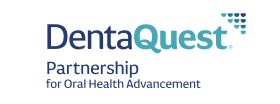Last week, the Centers for Medicare & Medicaid Services (CMS) released an informational bulletin outlining the various service and financing options that state Medicaid and CHIP programs can use to improve care for infants with neonatal abstinence syndrome (NAS) and their families. It also highlights Federal resources, tools, and models of care available to assist states, such as the HRSA Rural Health Integration Models for Parents and Children to Thrive (IMPACT) program. Read more here.
Rural-Urban Differences Among Older Adults
Researchers at the University of Minnesota Rural Health Research Center created a chartbook with characteristics of older adults in rural counties, as well as rural-urban differences across four domains: demographics, socioeconomic characteristics, healthcare access and use, and health characteristics. Read more here.
Rural Versus Urban Prevalence of Intimate Partner Violence-Related Emergency Department Visits, 2009-2014
In this study from the Southwest Rural Health Research Center, key findings indicate that emergency department visits for intimate partner violence incidents were higher in rural areas for women aged 15-64. Read more here.
NCSL on State Strategies to Reverse Suicide Trends
The National Conference of State Legislators (NCSL) cites higher rates of suicide in rural areas in its guide covering statistics, risk factors, and effect on specific populations. The report examines state-level initiatives including Mental Health First Aid Training, Applied Suicide Intervention Skills Training, and the Zero Suicide framework. Read more here.
FQHC Roles and Opportunities Related to Rural Hospital Closures
Federally Qualified Health Centers (FQHCs) that serve rural communities face several interlocking challenges, including determining how to respond when a local hospital faces financial vulnerability or closure. To better understand the FQHC experience with rural hospital closures, Capital Link, with support from HRSA, is conducting a national assessment of FQHCs in rural communities. Through this effort, Capital Link hopes to identify and share successful strategies health centers have used to respond to this challenge.
AJPH: A Public Health Lens on Rural Health
The September issue of the American Journal of Public Health devotes a special section to rural health with free access to articles on challenges and emerging opportunities. This section features research from several NRHA members!
National Health Care Scorecard: Where Does Your State Rank?
Becker’s Hospital Review
An analysis of state health system performance revealed Hawaii is the top-ranked state for access to healthcare, quality of care and other key measures.
The Commonwealth Fund’s “2020 Scorecard on State Health System Performance” assessed all 50 states and the District of Columbia on 49 performance indicators grouped into four dimensions: access and affordability, prevention and treatment, potentially avoidable hospital use and cost, and healthy lives. The data used for the scorecard is from before the emergence of COVID-19. Access additional information about the performance indicators here.
The annual scorecard showed Americans are living shorter lives than they did in 2014 and are dying in greater numbers from treatable conditions. Oklahoma, Arkansas, New Mexico, Kentucky and Mississippi had the biggest increase in premature death rates between 2012 and 2013 and from 2016 to 2017.
The report also found that Black Americans are twice as likely to die from treatable conditions, such as diabetes, heart disease and appendicitis, as white Americans. Though these disparities were found in every state, Mississippi, Arkansas and Oklahoma reported the highest rates of premature deaths among the Black community.
The report also looked at healthcare prices. It revealed the prices commercial insurers paid for hospital inpatient care were higher than Medicare prices in every state. Because insurers often pass along higher costs to employers in the form of higher premiums and deductibles, the report concluded that healthcare prices are driving spending growth and rising consumer healthcare costs.
Oral Health Value-Based Care: The FQHC Story

The DentaQuest Partnership and the National Association of Community Health Centers (NACHC) published a new white paper, “Oral Health Value-Based Care: The Federally Qualified Health Center (FQHC) Story.” FQHCs are remaking modern health care with an integrated oral health care approach. FQHCs and their dental programs are using telehealth and implementing value-based tools for prevention, creating better disease management, and positive patient oral health and overall health outcomes.
The Rise of Primary Care Transformation
Through HRSA’s cooperative agreement with National Organizations of State and Local Officials (NOSLO), the Association of State and Territorial Health Officials (ASTHO) published a brief on the roles state primary care offices (PCOs) have in addressing primary care transformation. Through transformational practices like primary care integration, workforce development, and partnership opportunities, PCOs can increase access to care and improve health outcomes for states.
HHS Launches the AHEAD Dashboard
Last month, HHS launched AHEAD. America’s HIV Epidemic Analysis Dashboard (AHEAD) is a data visualization tool that displays jurisdictional, state, and national data on the Ending the HIV Epidemic: A Plan for America (EHE) initiative six indicators:
- Incidence,
- Knowledge of status,
- Diagnoses,
- Linkage to HIV medical care,
- Viral suppression, and
- PrEP coverage.
AHEAD produces easily consumable graphics and tables to help inform national and local decision-making. Using this data, we can work towards meeting the goals of the EHE initiative: reduce the number of new HIV transmission in the U.S. by 90 percent by 2030.
Learn more at ahead.hiv.gov.
